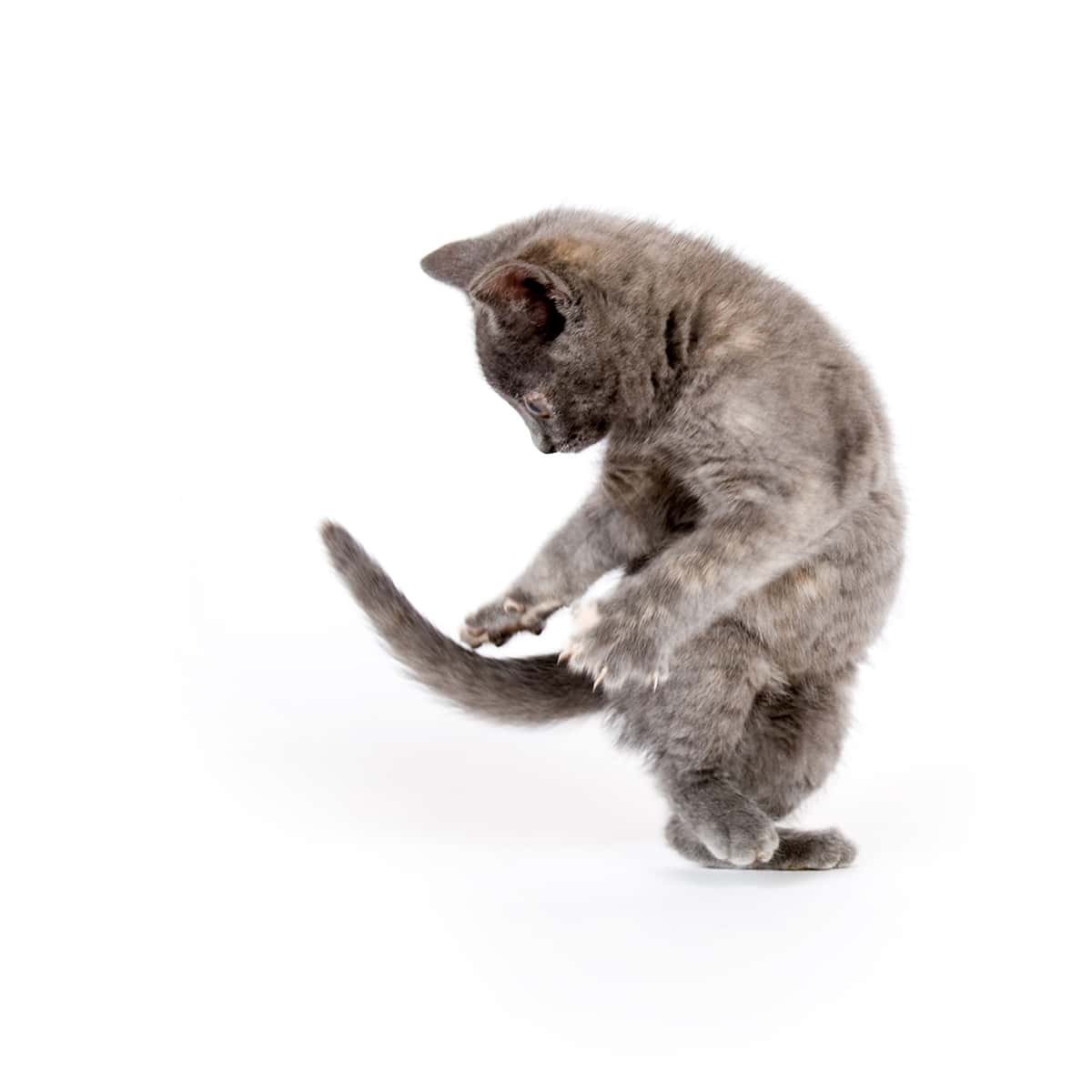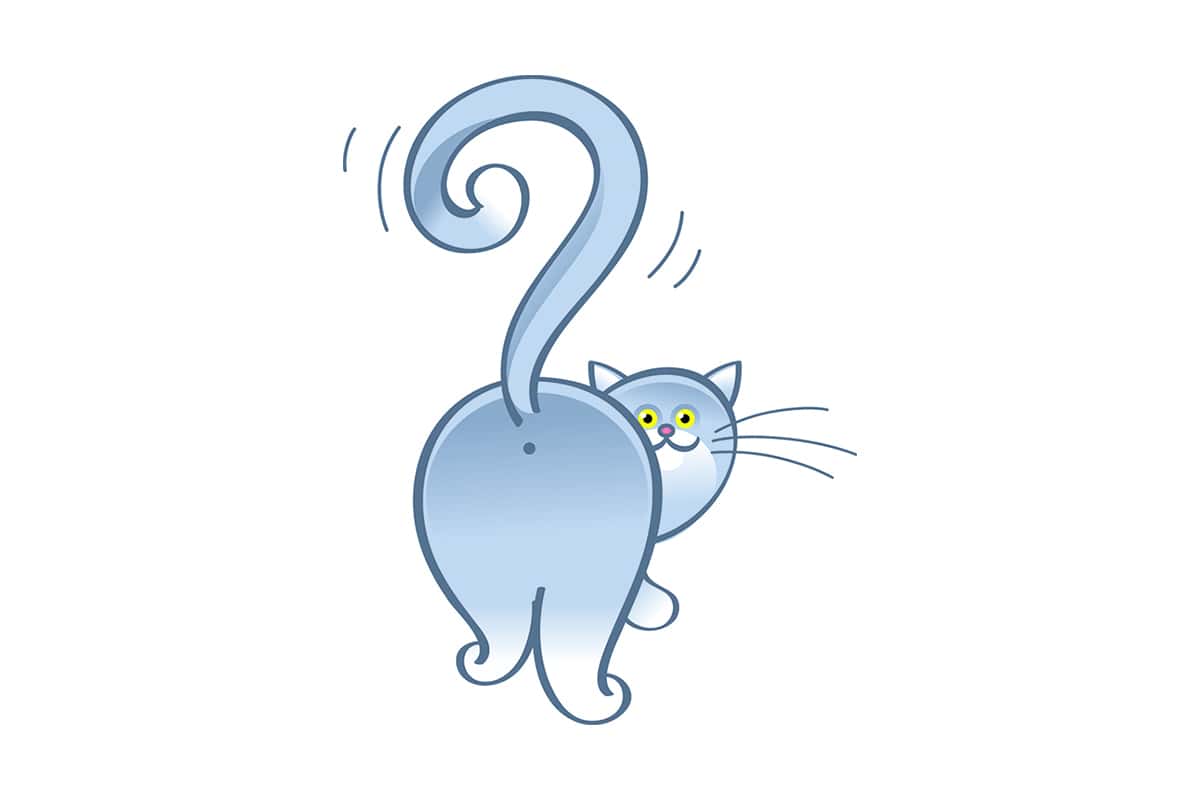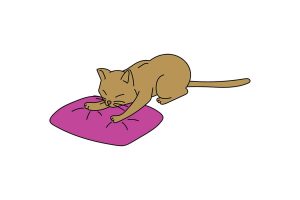Cats and their quirky antics have always been a source of amusement and bewilderment. Among their repertoire of peculiar behaviors, the sight of a cat chasing its tail can leave us chuckling and scratching our heads. What drives these feline furballs to engage in such a whirlwind pursuit?
The most common reasons cats chase their tails are for self-entertainment and to relive stress or anxiety. There could also be underlying health issues, such as Feline hyperaesthesia syndrome (FHS) or a flea infestation.
There’s still a lot more we can unpack. Keep reading if you’d like to learn more about this seemingly innocent behavior and how it is a part of the natural feline developmental process.
A Quick Intro to Cat Behavior

Cats have a behavior language all their own. From the subtle flick of a tail to an exuberant leap into the air, every action has a meaning.
Feline instincts are the whispers of the wild that still echo in the heart of every house cat. These natural behaviors, from the stealthy stalk to the playful pounce, are rooted in their survival tactics and hunting prowess. It’s a fascinating blend of nature and nurture that shapes the way our furry companions interact with the world around them.
Now, when it comes to the cat tails, there’s quite a lot they can communicate:
- A straight-up tail signals confidence and contentment.
- A twitching or thrashing tail can indicate excitement or irritation.
- A puffed-up tail serves as a warning of fear or aggression.
- Slowly swaying tails might mean they’re focused and ready to pounce on their prey—or maybe just a toy.
Why Do Cats Chase Their Tails?

While a cat can communicate its feelings through tail movements, what about tail chasing? Well, it turns out cats chasing their tails is a window into a complex world of psychology and physiology.
1. Boredom and Playfulness
Cats are naturally playful creatures, and sometimes, their tail becomes the most convenient toy at paw. In the first flush of boredom, that flicking tail tip can catch their eye, which sparks an impromptu game of chase.
However, there’s a flip side to this playful coin. When cats lack sufficient stimulation from their environment or interaction with their humans, chasing their tail can become a go-to activity to fill their time. A bit of boredom is good for the soul, but your cats need proper stimulation before they turn their attention to your furniture!
2. Stress and Anxiety
Just like us, cats can feel the weight of stress and anxiety, and tail-chasing can be a manifestation of these feelings. In an attempt to cope with environmental stressors—be it a new pet in the house, a change in routine, or even too much idle time—cats might turn to tail-chasing as a form of self-soothing or distraction.
This behavior serves as a barometer for their emotional state. Observing when and how often a cat chases its tail speaks volumes about their well-being. Creating a calm and stable environment, along with regular play and attention, can help alleviate these stress-induced behaviors.
3. Underlying Health Issues
While often playful or behavioral, tail-chasing can sometimes signal underlying health issues. The first clue might be a cat obsessively chasing or biting at its tail. From skin irritations and allergies to more serious conditions like neurological disorders like FHS or issues with the anal glands, the reasons can vary widely.
A sudden increase in tail-chasing, especially if accompanied by signs of distress or aggression, warrants a trip to the vet. A thorough examination can rule out or confirm any health concerns by ensuring any physical discomfort is addressed promptly.
Developmental Stages and Tail-Chasing

So, when do cats begin chasing their tails? As it turns out, it begins at a pretty early age, and it doesn’t stop just because the cat has hit puberty!
Kittens: Learning and Exploration
For kittens, the world is a vast playground, with every shadow and movement an invitation to explore and learn. Tail-chasing at this stage, while fun to the cat, is an integral crucial part of their development. Through this seemingly simple act, they refine their motor skills, as well as learn the extent of their physical and endurance capabilities.
Moreover, in the whirl of their tail lies the foundation of their hunting skills. Kittens mimic the actions of predation—stalking, pouncing, and biting—in a safe and controlled environment. This helps for when your kitten transitions into adept hunters (if or when that is).
Adult Cats: From Play to Predation
As cats mature, the intent behind tail-chasing shifts. It may still serve as a form of self-entertainment or exercise, but it’s often become less frequent. Adult cats tend to focus their energies on more productive pursuits. However, that doesn’t mean the tail chase is entirely off the table; it simply takes on a new context.
When adult cats do engage in tail-chasing, it can sometimes reflect a lingering playfulness or a spontaneous reminder of their youthful agility. Yet, it’s also a testament to their predatory instinct, a practice session for the real-life scenarios they instinctively prepare for.
FAQs
1. When do kittens stop chasing their tails?
Kittens often taper off tail-chasing as they transition into adulthood, typically around the age of 6 to 12 months. However, the exact timing can vary with each furry individual, as they grow out of their playful kitten behaviors and into their more dignified adult cat phase. The occasional tail chase in adult cats isn’t uncommon—it’s just less frequent and often more calculated.
2. How can I prevent my cat from obsessively chasing its tail?
If your cat seems a bit too obsessed with tail-chasing, consider beefing up their daily playtime routine with interactive toys, puzzles, or even a feathery wand to chase. These can provide a healthy outlet for their energy and reduce the fixation on their tail. Also, creating a stimulating environment with climbing shelves and lookout spots can keep them away from repetitive behaviors.
3. Should I play with my cat’s tail to encourage them?
Playing with your cat’s tail, though tempting, isn’t the best idea. It might inadvertently encourage aggressive or unwanted behaviors. Cats communicate and express emotions through their tails, so you need to respect their space and body language. Instead, focus on toys and activities that promote healthy play and bonding. This way, you nurture a happy, healthy relationship with your whiskered companion.





